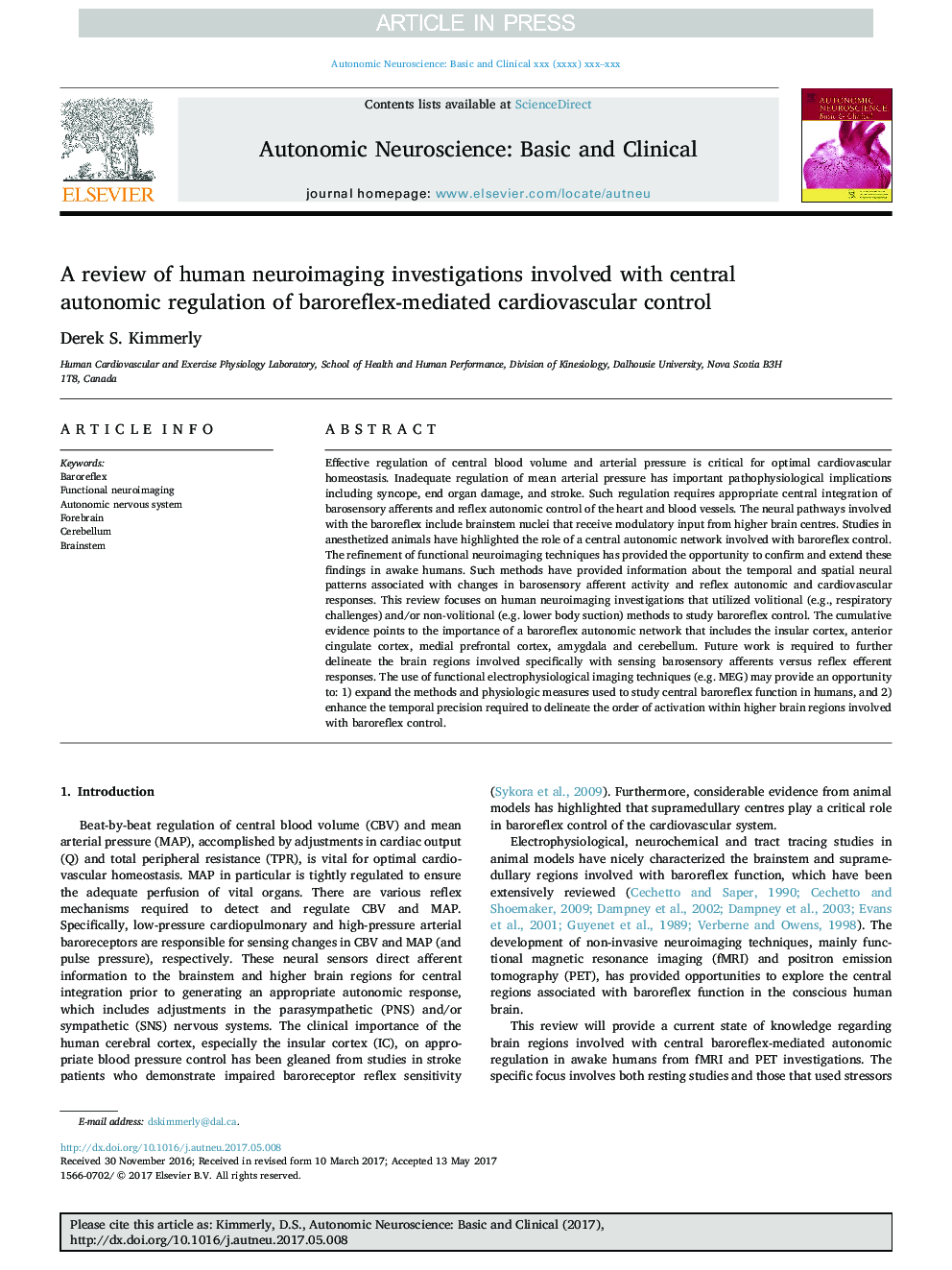| کد مقاله | کد نشریه | سال انتشار | مقاله انگلیسی | نسخه تمام متن |
|---|---|---|---|---|
| 8681097 | 1579508 | 2017 | 12 صفحه PDF | دانلود رایگان |
عنوان انگلیسی مقاله ISI
A review of human neuroimaging investigations involved with central autonomic regulation of baroreflex-mediated cardiovascular control
دانلود مقاله + سفارش ترجمه
دانلود مقاله ISI انگلیسی
رایگان برای ایرانیان
کلمات کلیدی
موضوعات مرتبط
علوم زیستی و بیوفناوری
علم عصب شناسی
علوم اعصاب سلولی و مولکولی
پیش نمایش صفحه اول مقاله

چکیده انگلیسی
Effective regulation of central blood volume and arterial pressure is critical for optimal cardiovascular homeostasis. Inadequate regulation of mean arterial pressure has important pathophysiological implications including syncope, end organ damage, and stroke. Such regulation requires appropriate central integration of barosensory afferents and reflex autonomic control of the heart and blood vessels. The neural pathways involved with the baroreflex include brainstem nuclei that receive modulatory input from higher brain centres. Studies in anesthetized animals have highlighted the role of a central autonomic network involved with baroreflex control. The refinement of functional neuroimaging techniques has provided the opportunity to confirm and extend these findings in awake humans. Such methods have provided information about the temporal and spatial neural patterns associated with changes in barosensory afferent activity and reflex autonomic and cardiovascular responses. This review focuses on human neuroimaging investigations that utilized volitional (e.g., respiratory challenges) and/or non-volitional (e.g. lower body suction) methods to study baroreflex control. The cumulative evidence points to the importance of a baroreflex autonomic network that includes the insular cortex, anterior cingulate cortex, medial prefrontal cortex, amygdala and cerebellum. Future work is required to further delineate the brain regions involved specifically with sensing barosensory afferents versus reflex efferent responses. The use of functional electrophysiological imaging techniques (e.g. MEG) may provide an opportunity to: 1) expand the methods and physiologic measures used to study central baroreflex function in humans, and 2) enhance the temporal precision required to delineate the order of activation within higher brain regions involved with baroreflex control.
ناشر
Database: Elsevier - ScienceDirect (ساینس دایرکت)
Journal: Autonomic Neuroscience - Volume 207, November 2017, Pages 10-21
Journal: Autonomic Neuroscience - Volume 207, November 2017, Pages 10-21
نویسندگان
Derek S. Kimmerly,